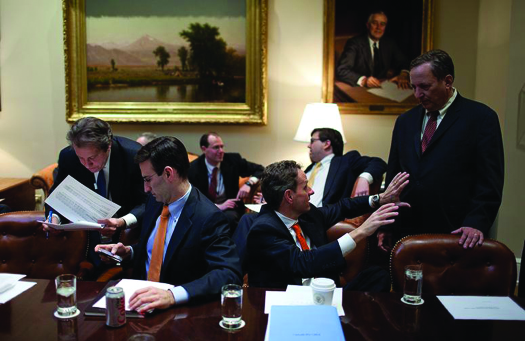| << Chapter < Page | Chapter >> Page > |
By the end of this section, you will be able to:
A country spends, raises, and regulates money in accordance with its values. In all, the federal government’s budget for 2016 was $3.8 trillion. This chapter has provided a brief overview of some of the budget’s key areas of expenditure, and thus some insight into modern American values. But these values are only part of the budgeting story. Policymakers make considerable effort to ensure that long-term priorities are protected from the heat of the election cycle and short-term changes in public opinion. The decision to put some policymaking functions out of the reach of Congress also reflects economic philosophies about the best ways to grow, stimulate, and maintain the economy. The role of politics in drafting the annual budget is indeed large ( [link] ), but we should not underestimate the challenges elected officials face as a result of decisions made in the past.

Until the 1930s, most policy advocates argued that the best way for the government to interact with the economy was through a hands-off approach formally known as laissez-faire economics. These policymakers believed the key to economic growth and development was the government’s allowing private markets to operate efficiently. Proponents of this school of thought believed private investors were better equipped than governments to figure out which sectors of the economy were most likely to grow and which new products were most likely to be successful. They also tended to oppose government efforts to establish quality controls or health and safety standards, believing consumers themselves would punish bad behavior by not trading with poor corporate citizens. Finally, laissez-faire proponents felt that keeping government out of the business of business would create an automatic cycle of economic growth and contraction. Contraction phases in which there is no economic growth for two consecutive quarters, called recession s , would bring business failures and higher unemployment. But this condition, they believed, would correct itself on its own if the government simply allowed the system to operate.
The Great Depression challenged the laissez-faire view, however. When President Franklin Roosevelt came to office in 1933, the United States had already been in the depths of the Great Depression for several years, since the stock market crash of 1929. Roosevelt sought to implement a new approach to economic regulation known as Keynesianism. Named for its developer, the economist John Maynard Keynes , Keynesian economics argues that it is possible for a recession to become so deep, and last for so long, that the typical models of economic collapse and recovery may not work. Keynes suggested that economic growth was closely tied to the ability of individuals to consume goods. It didn’t matter how or where investors wanted to invest their money if no one could afford to buy the products they wanted to make. And in periods of extremely high unemployment, wages for newly hired labor would be so low that new workers would be unable to afford the products they produced.

Notification Switch
Would you like to follow the 'American government' conversation and receive update notifications?